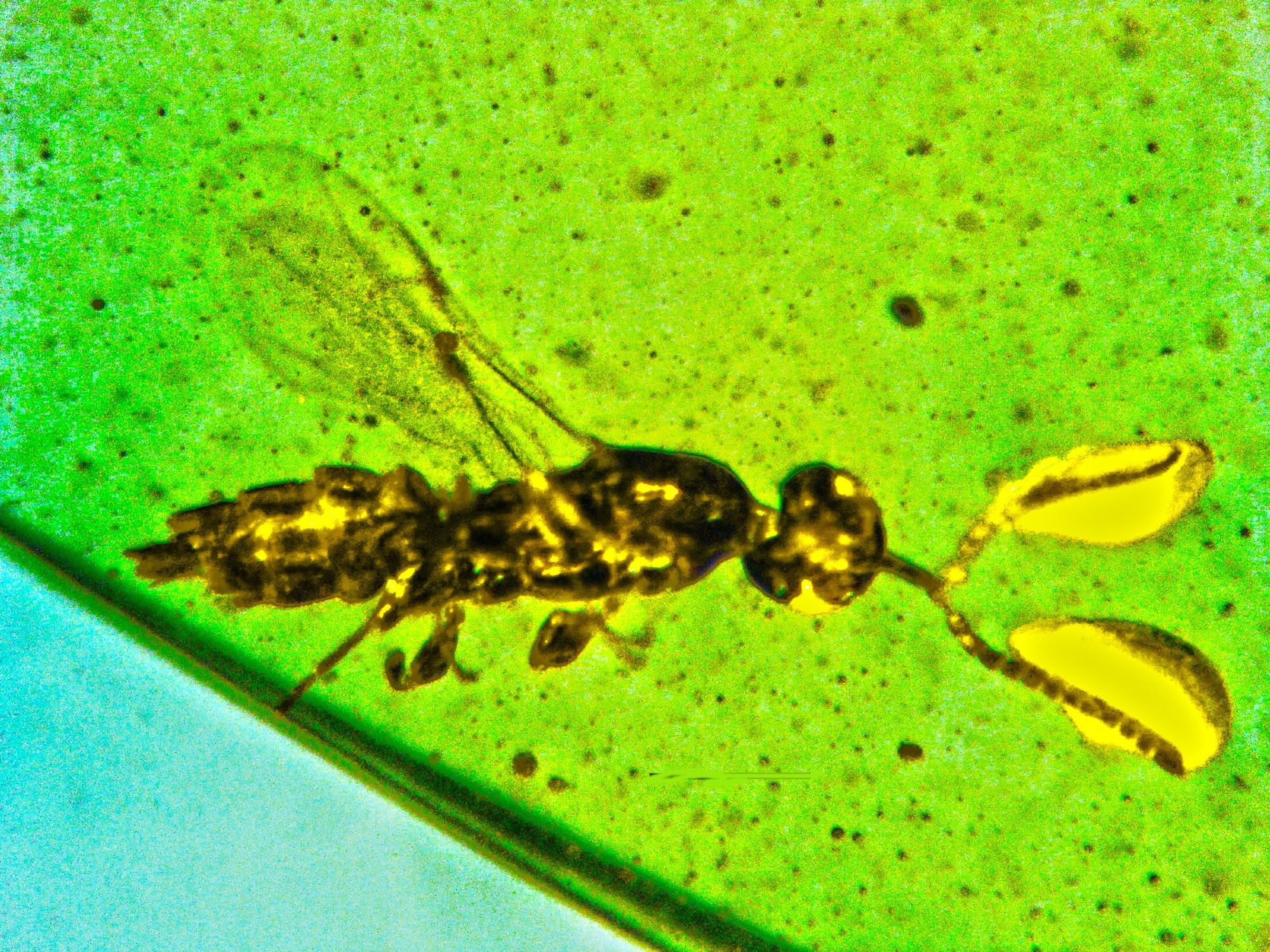Reviewed by Danielle Ellis, B.Sc.Oct 5 2023
Fossil researchers have made an intriguing discovery—a new genus and species of minuscule wasp with a perplexing, bulbous structure located at the tip of each antenna.
 Fossil researchers have discovered a novel genus and species of tiny wasp with a mysterious, bulbous structure at the end of each antenna. Image Credit: George Poinar Jr.
Fossil researchers have discovered a novel genus and species of tiny wasp with a mysterious, bulbous structure at the end of each antenna. Image Credit: George Poinar Jr.
This female micro-wasp was identified from 100-million-year-old Burmese amber and was part of a study led by George Poinar Jr, who holds a courtesy appointment in the Oregon State University College of Science.
Poinar and Fernando Vega, an independent researcher located in Silver Spring, Maryland, have proposed some theories regarding the enigmatic “clouds” observed on the antennae of these wasps, but they have not definitively identified their purpose.
“We could find no fossil or extant insect with such antennal structures,” says Poinar, an international expert in utilizing plant and animal life forms preserved in amber to learn about the biology and ecology of the distant past. “We wondered how it could still fly with that weight.”
Micro-wasps are characterized by their diminutive adult body size, measuring less than 2 millimeters in length. There are numerous species of these parasitic insects in existence today, distributed among hundreds of genera, as explained by Poinar. Some of these micro-wasps play a valuable role in controlling scale insects, which can be detrimental to crop pests.
This micro-wasp has a length of only 1.3 mm. That, as well as its 15-segment antennae, a deep cleft in the center of its head, and characters of the wings distinguish it from all other micro-wasps. The unique, miniature cloudlike structures stuck to the antennae must have certainly been an annoyance to this tiny parasite.”
Poinar Jr, College of Science, Oregon State University
Given that the researchers have not encountered similar structures on any other insect, whether contemporary or from the past, their understanding of these bulbous formations on the antennae is limited to educated hypotheses and conjectures.
They could be tiny plant seeds, plant secretions, or eggs from a host the wasp was parasitizing. There is a good possibility the micro-wasp was parasitizing scale insects since there is a male scale insect embedded in the same piece of amber. Whatever they are, discovering these is one of the things that makes our work so interesting, and challenging: finding dominant, unique features on extinct organisms.”
Poinar Jr, College of Science, Oregon State University
The scientists have bestowed the name “Caradiophyodus saradae” upon this newly discovered specimen. The genus name is derived from Greek words signifying “head” (kara) and “cleft” (diaphyodus), while the species name is a nod to fellow scientist Sarada Krishnan.
Source:
Journal reference:
Poinar, G., & Vega, F. E. (2023). Caradiophyodidae, a New Family of Micro-Wasps (Hymenoptera: Platygastroidea) Based on the Description of Caradiophyodus saradae gen. et sp. nov. in Mid-Cretaceous Burmese Amber. Life. doi.org/10.3390/life13081698.